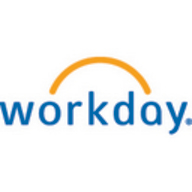

SAP SuccessFactors and Workday compete in the Human Capital Management category, focusing on managing the entire employee lifecycle. SAP SuccessFactors offers a modular approach and robust integration, while Workday simplifies data management with in-memory processing. Workday seems to have an edge in simplicity and AI-driven processes.
Features: SAP SuccessFactors offers modular deployment, advanced reporting capabilities, and comprehensive talent solutions with workforce analytics. Workday's strengths include a single in-memory system for seamless data consolidation, an intuitive business process framework, and ease of workflow creation without needing technical expertise.
Room for Improvement: SAP SuccessFactors could enhance analytics capabilities, streamline module integration, and increase flexibility and customization to adapt to local regulations. Workday could improve payroll customization for international markets, simplify navigation in complex configurations, and enhance client support for responsiveness and adaptation.
Ease of Deployment and Customer Service: Both solutions offer public cloud deployment, with SAP providing flexible hybrid options but facing mixed reviews on support effectiveness. Workday is recognized for its straightforward deployment and comprehensive service, driven by community feedback, although it could increase localization support.
Pricing and ROI: SAP SuccessFactors is considered expensive, priced per user and module, which can delay ROI despite feature richness. Workday is also priced similarly, but its comprehensive integration capabilities and data management provide clearer ROI, making it appealing for enterprises seeking robust HR solutions.
With Workday, I can pick up the phone, call them on Teams, and they answer immediately.
We have implemented it for 25,000 employees, scaling from 7,000 to 25,000 using the same set of rules, and it was not difficult.
The solution is absolutely stable.
I hardly ever encounter any stability issues, as SAP SuccessFactors is very good and stable.
Workforce analytics is still challenging due to customizations. It does not provide flexibility in terms of analytics, and we have to customize extensively.
Advisories can only be placed at the bottom, which is less effective as employees may not scroll down to see them.
They should implement soft connectors through a marketplace for virtual learning integration with platforms such as Teams, Cisco, and Webex, rather than relying on hard connectors using APIs.
While there is mass upload functionality where we can load shifts for all people or specific groups, we need to select multiple people and assign them to a schedule from the interface itself.
However, going by the demo, I think it is quite simple to use.
The licensing cost is not expensive now.
The licensing costs are quite high, which is a typical scenario for such solutions.
The best features of SAP SuccessFactors are workflows, the storyboard, the workforce analytics, and customization in terms of doing those portlets and MDIs, which are much simpler.
SAP SuccessFactors has advantages in providing AI-driven initiatives such as candidate screening and matching features within the recruitment module.
Employees can view their goals, performance, ratings, and employee information, which enhances the employee experience.
Comparing Workday to other products, I am taking a positive note about Workday and it is the first priority that I suggested compared to Oracle or other products.
The interface of Workday is superior.
| Product | Market Share (%) |
|---|---|
| SAP SuccessFactors | 16.5% |
| Workday | 15.1% |
| Other | 68.4% |


| Company Size | Count |
|---|---|
| Small Business | 22 |
| Midsize Enterprise | 13 |
| Large Enterprise | 69 |
| Company Size | Count |
|---|---|
| Small Business | 16 |
| Midsize Enterprise | 6 |
| Large Enterprise | 41 |
SAP SuccessFactors is an AI-powered, cloud-based HR suite supporting over 100 countries, providing real-time insights and integrated solutions across core HR, payroll, talent, learning, analytics, and employee experience.
Trusted by over 10,000 organizations, SAP SuccessFactors elevates people processes, decisions, and experiences by empowering employees. It offers AI-driven tools enhancing self-service, learning, performance, and development, unifying people and skills data to align talents with business goals. The platform ensures compliance with legal updates and speeds up results using HR best practices and a robust partner network. Its modular design, seamless integration, and mobile access stand out, supporting global accessibility and talent management. Role-based permissions and automated compliance offer flexibility and security, catering to diverse industries.
What are the most important features of SAP SuccessFactors?Organizations implement SAP SuccessFactors for Performance Management, Talent Acquisition, Learning, and HR core functions, streamlining recruitment, onboarding, records management, goal setting, and performance evaluation. It extends to time management, compensation, and talent development, integrating across geographies for centralized data management, reporting, and analytics, enhancing HR operations and employee engagement.
Workday is a cloud-based software solution that specializes in developing applications for capital and finance management applications. The system is built to work in global workforces and is adaptable. The global system ensures that users are up to date and can manage internal career-related information, and everyday business problems like timesheets, payrolls, and time off.
“A Pioneer in Software-as-a-Service”
Workday Human Capital Management tool is designed to simplify and streamline your work. It leverages machine learning to adapt capital management to a changing environment.
The Workday model is based on delivering a single system that uses a single source of data and a single security model to deliver a unique user experience. The system is user-friendly and ensures that employees and management can use it from any and all devices. Workday HCM integrates into a central system that includes financial management, payroll, recruiting, learning, and planning. Managers and employees can provide feedback to one another, too.
Workday’s features include:
Workday smart platform consists of the following modules:
Reviews from Real Users
Many organizations choose Workday because it provides an all-in-one modular solution for human capital and finance management. Our users say they like the ease of use for time-off requests, career and development segments, and overall HR management. The records and reporting capabilities are another popular feature.
"The solution was very good at reconfiguration and customization of their software. It helped us to meet federal regulations," said one user. Another said that the best feature is the optimization of the work day experience with a unified platform that can be applied across different business units. “You will never find a use case that cannot be covered," said a third.
We monitor all Cloud HCM reviews to prevent fraudulent reviews and keep review quality high. We do not post reviews by company employees or direct competitors. We validate each review for authenticity via cross-reference with LinkedIn, and personal follow-up with the reviewer when necessary.